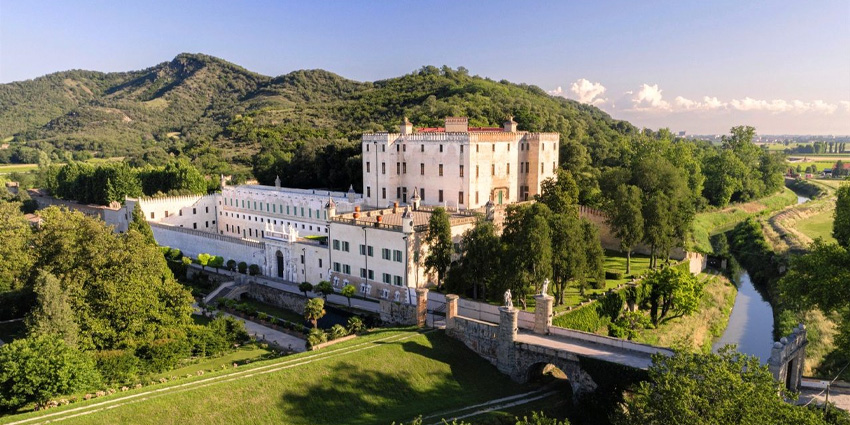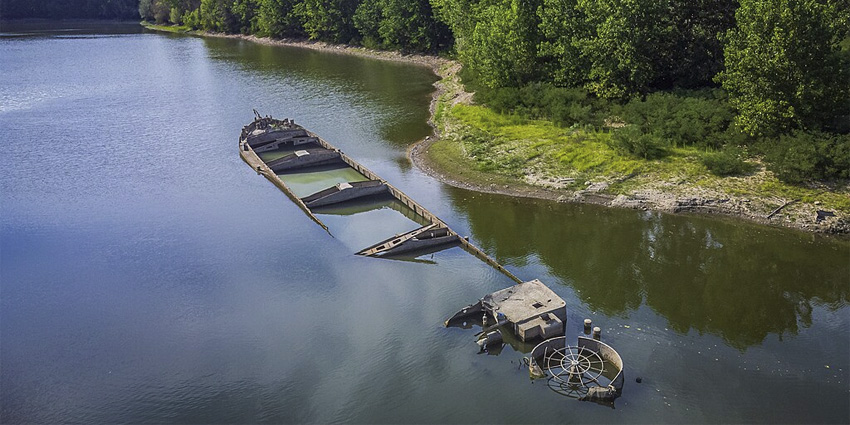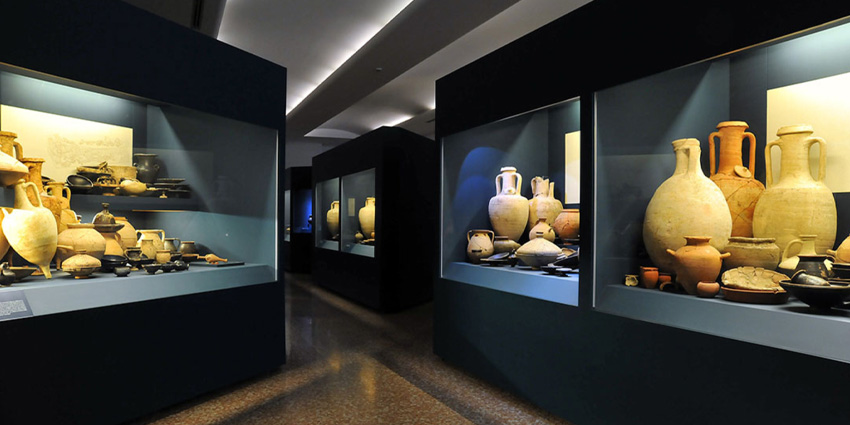
The Castle of Catajo: An Emotional Journey Through History, Legends, and Timeless Wonder
The Castle of Catajo, nestled gently among the soft curves of the Euganean Hills, rises like a silent guardian of centuries gone by.
Its majestic silhouette dominates the landscape with an elegance that feels almost unreal, as if suspended between earth and sky. Observing it from afar awakens a sense of curiosity and quiet admiration: the desire to imagine ancient rituals, princely lives, secret corridors, and the echoes of a world that continues to breathe beneath its stones.
A Princely Residence Where Grandeur Meets Intimacy
Built in the 16th century by the powerful Obizzi family, the Castle of Catajo was conceived as both a sumptuous residence and a place of representation. Its architecture—half fortified stronghold, half noble villa—embodies the duality of strength and refinement that defined the Renaissance spirit. Walking along its imposing entrance avenue feels like crossing an invisible threshold into a realm where gestures, glances, and ambitions from another era have been preserved in the air.
The structure unfolds in terraces, courtyards, and grand halls designed to astonish. Decorative elements carved in stone narrate the proud legacy of the Obizzi, while the building’s strategic position reflects their desire to dominate the territory visually and symbolically. Every angle reveals a harmony of proportions, a balance of forms that still today conveys a sense of princely dignity.
A Painted Chronicle: Emotional Resonance in Every Hall
Inside, the Castle of Catajo guards one of Italy’s most remarkable collections of Renaissance celebratory frescoes. The walls come alive with vibrant colors, epic battles, allegories, family triumphs, and mythological scenes that seem to expand beyond their physical space. Each hall feels like an open book, a visual narrative that envelops the visitor in an atmosphere suspended between art and memory.
As you walk through these rooms, emotion becomes part of the experience. The frescoes do more than depict events—they evoke a world of gestures and voices, of ambitions and victories. Light filters in gently, sliding over the painted surfaces and animating them with delicate reflections. The result is a sense of immersion so profound that one almost forgets the boundary between the present and the past.
Gardens and Landscape: Nature as a Silent Companion
Outside, the Castle of Catajo is surrounded by a historic garden that enhances its magnificence with an atmosphere of serenity. Ancient trees, geometries softened by time, and panoramic views over the Euganean landscape create a natural setting that invites contemplation. The water reflections of the grand brolo transform the castle into a mirror image, shifting with the movement of clouds and the breeze.
In this outdoor sanctuary, silence becomes a gentle presence rather than an absence. Paths invite the visitor to slow down, breathe deeply, and allow the landscape to unfold in all its subtle shades. The soft interplay of light and vegetation offers moments of pure introspection, as if nature itself had chosen to embrace the castle with delicate reverence.
A Tapestry of Legends, Voices, and Memories
The Castle of Catajo is not just an architectural treasure; it is a vessel of stories shaped by centuries of transformations. The rise of the Obizzi, the later presence of the Habsburgs, the changes brought by different eras—each layer adds depth to the castle’s identity. Local legends, whispered through generations, enrich its aura with mystery.
Walking through its corridors, one feels the presence of time as something living and tangible. The castle seems capable of retaining not only historical facts but also emotions, wishes, and the invisible traces of the people who once inhabited it. This sense of continuity creates an intimate connection between visitor and place, as if the castle itself were sharing fragments of its long memory.
A Profound Encounter That Lingers Beyond the Visit
Experiencing the Castle of Catajo means entering a multidimensional journey where art, architecture, landscape, and emotion blend seamlessly. The richness of its frescoes, the imposing beauty of its exteriors, and the quiet poetry of its gardens weave together an atmosphere that touches the senses and the imagination.
The castle does not merely reveal itself; it resonates. It invites reflection, awakens awe, and offers moments of unexpected intimacy. Long after leaving, its images and sensations linger—an enduring reminder of a place where history breathes softly and beauty unfolds with an almost ethereal grace.




